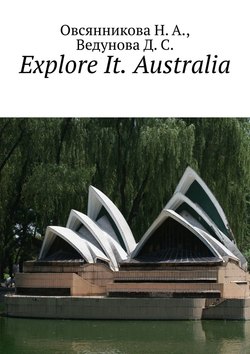Читать книгу Explore It. Australia - Д. С. Ведунова - Страница 5
Economy of Australia
ОглавлениеAustralia is a highly developed post-industrial state. Australia’s economy is one of the largest economies in the world, with a GDP of US $ 1.57 trillion. The aggregate wealth of Australia is $ 6.4 trillion. In 2012, Australia ranked 12th in the list of the largest national economies in terms of nominal GDP and 18th in terms of GDP. The share of the Australian economy is approximately 2.1% of the world economy. Australia is ranked 19th in the world in both import and export.
The Australian Securities Exchange in Sydney is the largest stock exchange in Australia and the South Pacific, and also ranks 9th in the world in terms of market capitalization of $ 1.4 trillion. Australia is home to some of the world’s largest companies such as: BHP Billiton, National Australia Bank, Commonwealth Bank, Rio Tinto, ANZ, Westpac, Telstra, Macquarie Group, Woolworths Limited and AMP Limited – the 10 largest companies in Australia.
The Australian dollar is the currency of the Commonwealth of Australia and its territories, including Christmas Island, Cocos Islands and Norfolk Island. It is also the official currency of several independent Pacific states: Kiribati, Nauru and Tuvalu.
Australia is a member of APEC, G20, OECD and WTO. The country has also signed free trade agreements with ASEAN, Chile, New Zealand and the United States. A 1983 trade agreement to strengthen economic ties between Australia and New Zealand, which gradually removed restrictions on import and export operations, was able to significantly help integration with the New Zealand economy and in 2011 a plan was adopted to form a single Australasian economic market by 2015.
В The Australian economy is dominated by the service sector, which covers about 68% of GDP.
The mining sector accounts for 10% of GDP; sectors of the economy related to the extraction of minerals account for another 9% of GDP. Economic growth is highly dependent on the mining and agricultural sectors, whose products are mainly exported to the markets of East Asia. Over the past decade, one of the main trends in the sectoral economy has been the growth (in relative terms) of the mining sector (including oil). In terms of its contribution to GDP, this sector grew from 4.5% in 1993—1994 to almost 8% in 2006—2007.
The share of raw materials in exports is significant – 54%
Australia’s GDP per capita is higher than the UK, Germany and France in terms of purchasing power parity (PPP) currencies. Australia’s GDP per capita (PPP) is ranked 5th in the world (IMF 2011). The country was ranked second in the 2011 UN HDI and sixth by The Economist on the World Quality of Life Index in 2005. Australia has a credit rating of “AAA” – higher than the United States.
According to Credit Suisse’s 2011 Total World Wealth Report, Australia has an average wealth of $ 222,000, the highest in the world and nearly four times that of an adult in the United States. The proportion of those with wealth over $ 100,000 is the highest in the world – eight times the world average. The average wealth is $ 397,000, the second largest in the world after Switzerland.
Inflation is usually 2—3%, and the basic interest rate is 1.5—5%. The service sector in the economy, including tourism, education and financial services, accounts for 70% of GDP. The Australian National University in Canberra is supporting an interest rate forecasting project for the Australian economy, which is calculated from statistics by the so-called “shadow” members of the ANU faculty.
GDP
Australia’s average GDP growth rate during the period from 1901 to 2000 was 3.4% annually. Over the past 23 years, Australia has been demonstrating continuous GDP growth, despite two global recessions in economic activity, with an average growth rate of 3.3% per year.
History
After the transport of criminals to the “eastern mainland” ended in 1840, Australia was heavily dependent on subsidies from Britain. Economic growth was supported largely by huge government spending on transport, communications and urban infrastructure, which was also heavily dependent on British finance. At the same time, opportunities for high profits from grazing and mining have attracted a significant amount of British private and corporate capital. The rise of the mining industry laid the foundation for Australia’s economic growth. As the economy grew, there was a need for large-scale immigration to meet the growing demand for labour.
Mining has provided long and stable economic growth in the post-war period. Western Australia in particular benefited particularly from iron and gold mining in the 1960s and 1970s, which fuelled increased consumer protection in Perth, the capital and most populous city of Western Australia, and increased deurbanization in other regional areas. centres.
In 1983, under Prime Minister Robert Hawke, but mainly with the assistance of Treasury Secretary Paul Keating, the Australian dollar was introduced and a course of financial deregulation was set.
Since the early 1980s. and to date, the Australian economy is undergoing prolonged economic liberalization. The Australian economy has grown at an average annual rate of 3.6% for over 15 years, well above the OECD average of about 2.5%.
